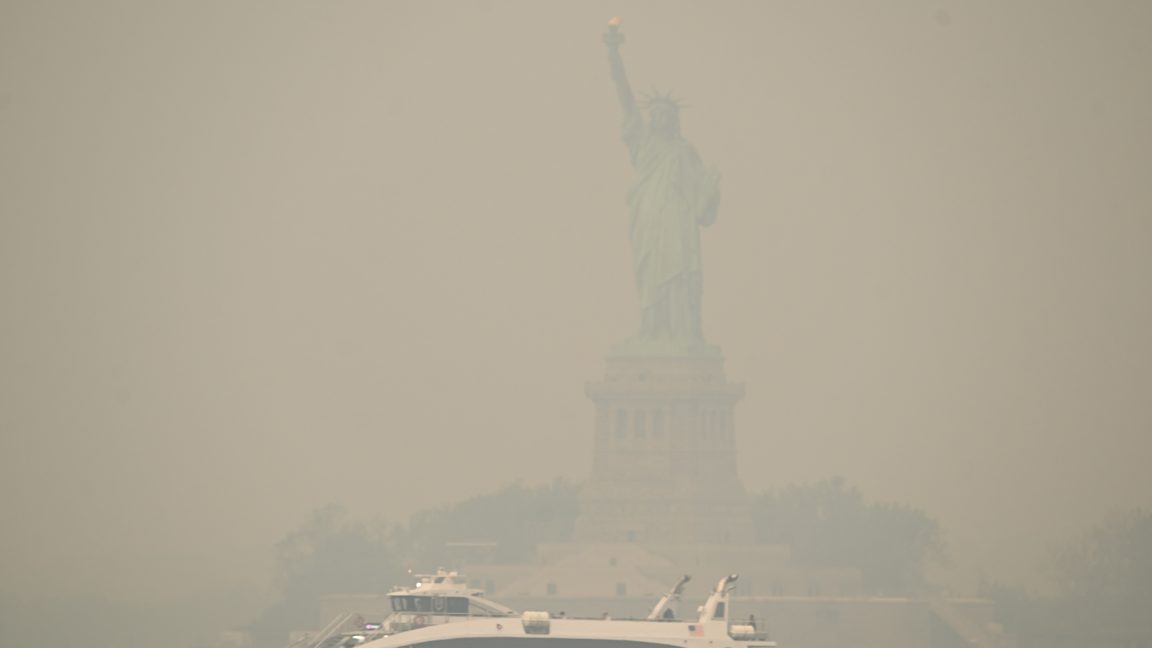Ten years ago, Tracey Holloway, an atmospheric scientist at the University of Wisconsin–Madison, would have said that air pollution in the United States was a huge success story. “Our air had been getting cleaner and cleaner almost everywhere, for almost every pollutant,” she said. But in June 2023, as wildfire smoke from Canada spread, the air quality dropped to historically low levels in her home state of Wisconsin.
Just last month, the region’s air quality dipped once more to unhealthy levels. Again, wildfires were to blame.
While the US has made significant strides in curbing car and industrial pollution through setting emission limits on industrial facilities and automakers, the increasing frequency and intensity of fires are “erasing the gains that we have obtained through this pollutant control effort,” said Nga Lee “Sally” Ng, an aerosol researcher at Georgia Institute of Technology.
The changing dynamics present a challenge for both residents and researchers tracking air quality. Many of the high-quality monitors used to measure pollution reside near large cities and stationary sources, such as coal-powered plants, and don’t cover the US uniformly. Regions that lack such stations are called air quality monitoring deserts, and they may leave vulnerable populations in the dark about their local conditions.
The current infrastructure also isn’t set up to fully account for the shifting behavior of wildfire smoke, which can travel hundreds of miles or more from fire sources to affect air quality and public health in distant communities. That smoke can also include toxins, such as lead when cars and homes burn.
“Fires are really changing the story,” said Holloway.
Since the introduction of the Air Pollution Control Act of 1955, air quality has been recognized as a national issue in the United States. Then with the enactment of the Clean Air Act in 1970 and following amendments, researchers and federal agencies began to monitor the level of pollutants, particularly carbon monoxide, nitrogen dioxide, ozone, particulate matter, and sulfur dioxide, to identify if these were up to the established National Ambient Air Quality Standards.

